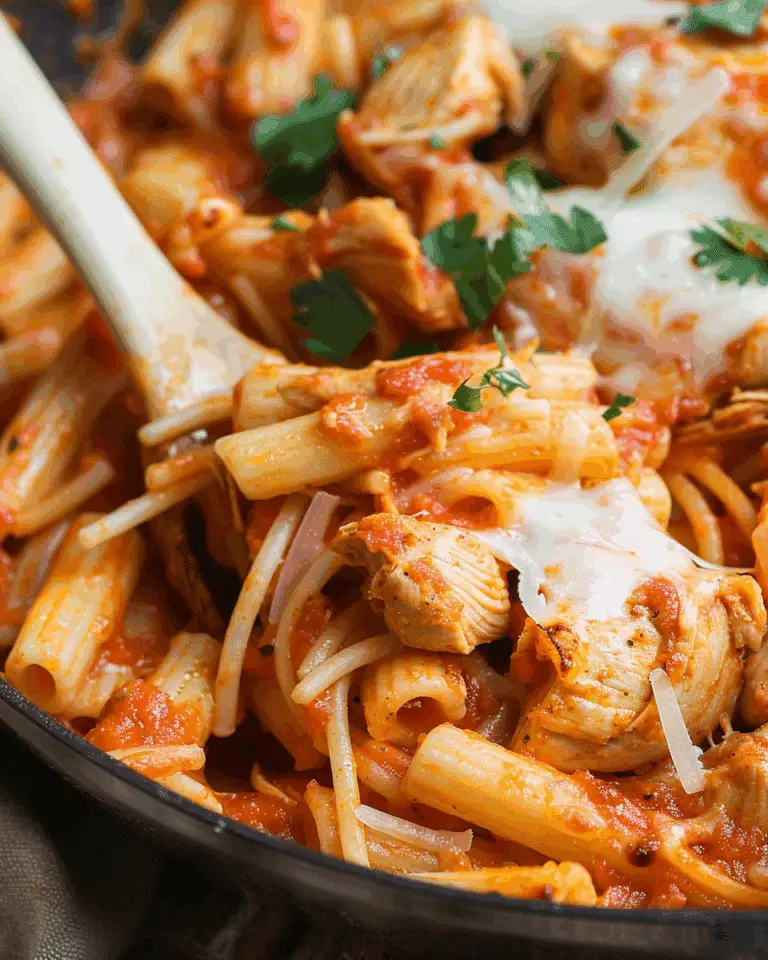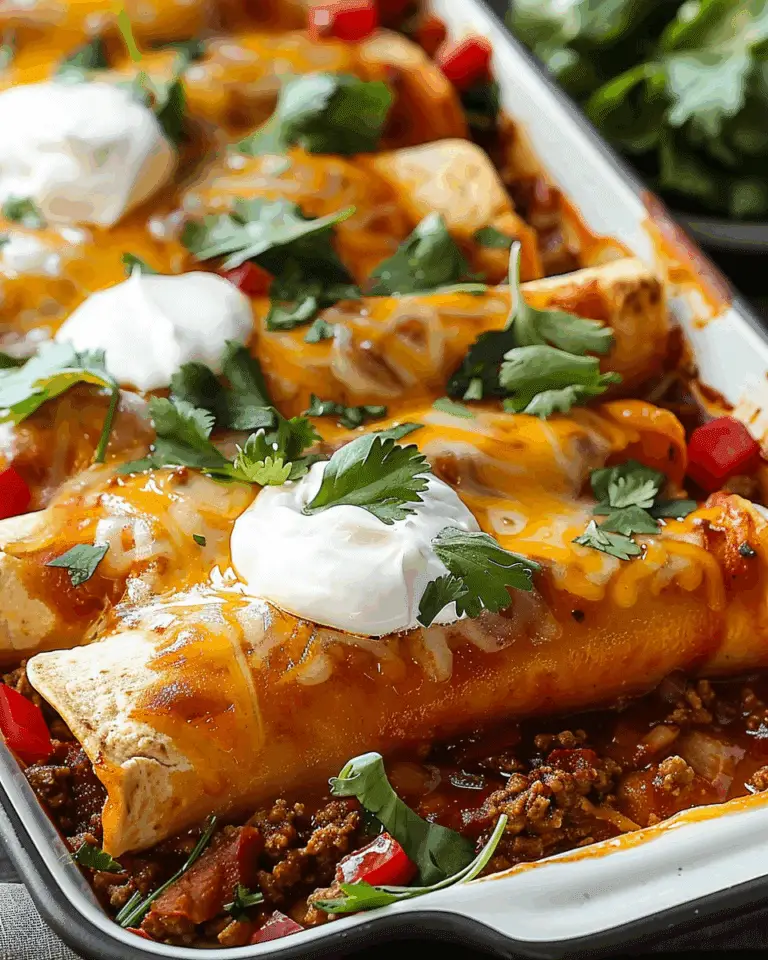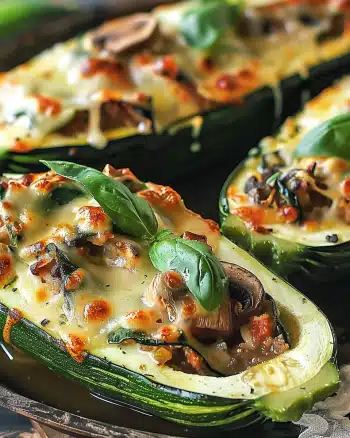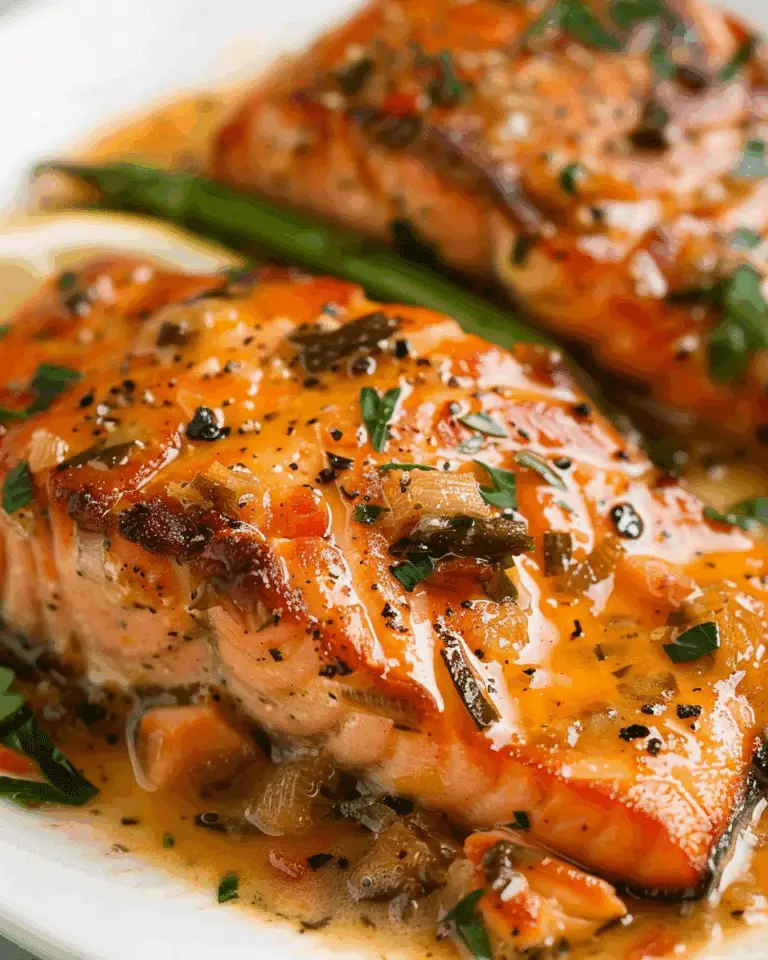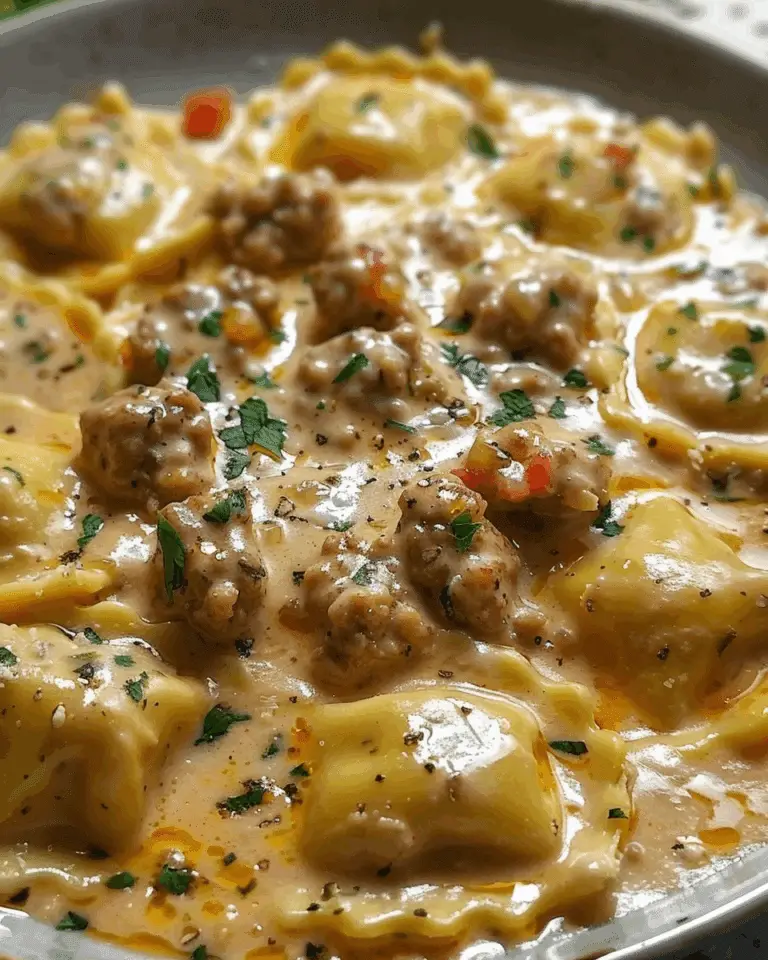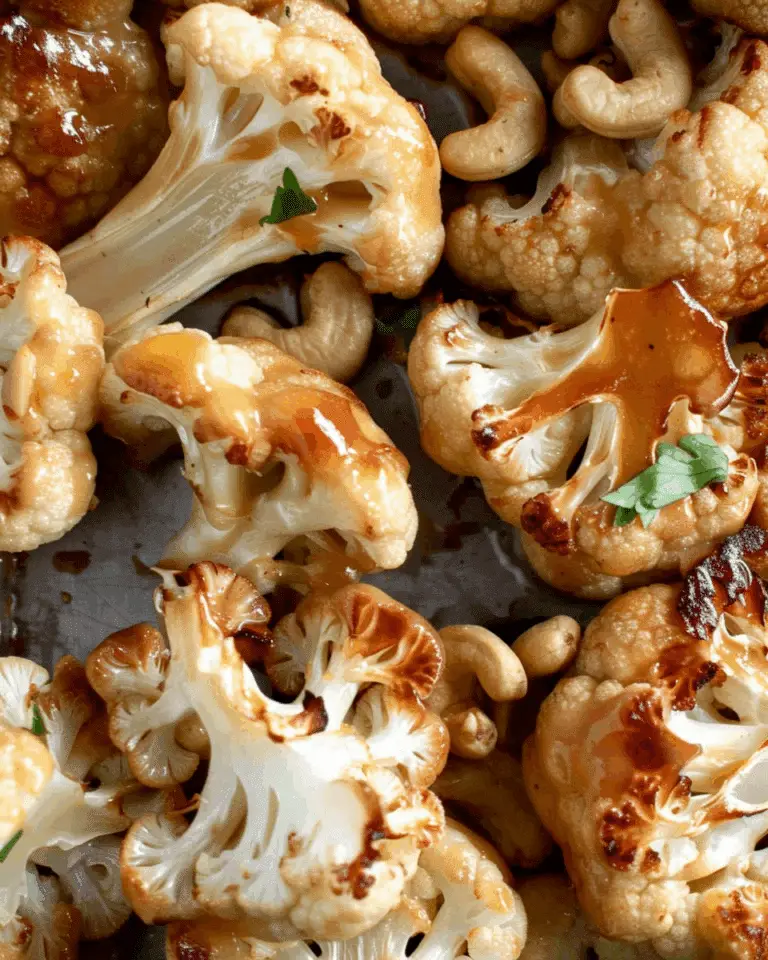I keep this Roman classic gloriously simple: al dente spaghetti, salty-crisp guanciale, a gloss of silky eggs and Pecorino Romano, and plenty of black pepper. I skip cream and garlic, rely on technique, and end up with strands coated in a luxurious, peppery sauce that tastes bigger than the sum of its parts.
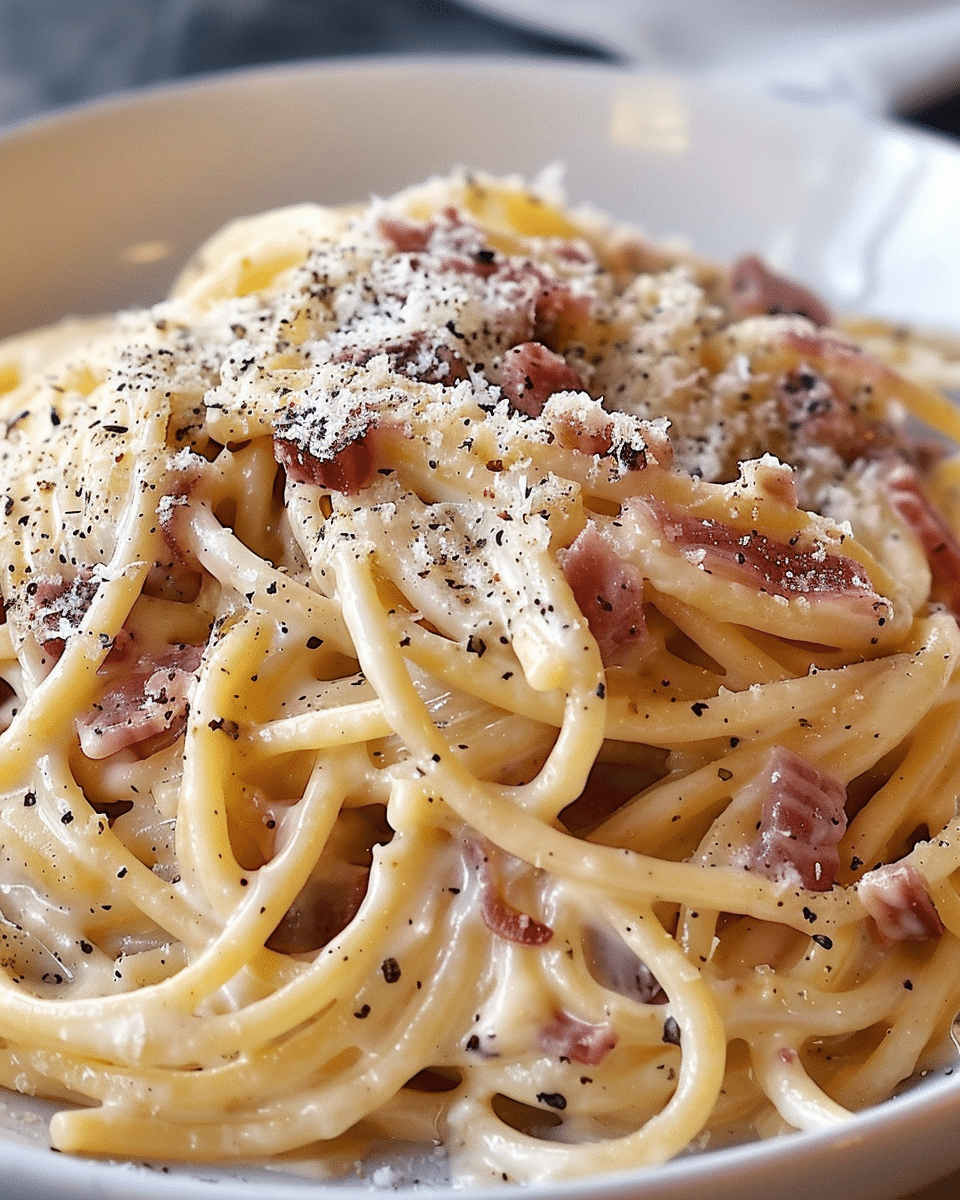
Why You’ll Love This Recipe
I use just a handful of ingredients and lean on method, not add-ins, to get a perfectly creamy, restaurant-worthy sauce. I let the rendered pork fat and starchy pasta water do the emulsifying, I control the heat so the eggs stay velvety, and I finish with a shower of sharp Pecorino and cracked pepper that wakes up every bite.
Ingredients
(Here’s a tip: Check out the full list of ingredients and measurements in the recipe card below.)
-
400 g spaghetti
-
150 g guanciale, cut into lardons (pancetta in a pinch)
-
4 large egg yolks + 1 whole large egg
-
100 g Pecorino Romano, very finely grated (or 70 g Pecorino + 30 g Parmigiano Reggiano)
-
freshly ground black pepper
-
fine salt, for the pasta water only
Directions
-
I start the pork: I place the guanciale in a cold skillet and set it over medium heat. I cook, stirring occasionally, until the fat renders and the edges turn golden and crisp. I turn off the heat and keep all the rendered fat in the pan.
-
I whisk the sauce base: In a bowl, I whisk the egg yolks and whole egg with most of the cheese and a generous amount of black pepper until thick and creamy.
-
I cook the pasta: I boil the spaghetti in well-salted water until just al dente. I dip out a mug of starchy cooking water, then drain.
-
I emulsify: I add the hot pasta to the skillet with the guanciale and fat (off the heat). I toss to coat, then stream in a splash of pasta water so the fat loosens and turns glossy.
-
I make it silky: I pour the egg-cheese mixture over the pasta, tossing constantly off the heat. I add more hot pasta water a little at a time until the sauce turns satiny and clings to the strands without scrambling.
-
I finish: I plate immediately with the remaining cheese and more black pepper.
Servings and timing
I plan on 4 servings. I set aside about 10 minutes to prep and 15 minutes to cook, for roughly 25 minutes total.
Variations
-
I switch shapes to bucatini or rigatoni when I want extra chew.
-
I blend cheeses (half Pecorino, half Parmigiano) for a slightly rounder, less assertive bite.
-
I use pancetta if guanciale isn’t available, knowing it’s a touch leaner and less funky.
-
I keep it vegetarian by crisping well-seasoned mushrooms in olive oil and adding a pinch of smoked paprika (non-traditional but satisfying).
-
I scale for two by halving everything and using a 24–26 cm skillet to keep the toss manageable.
storage/reheating
I serve carbonara as soon as it’s glossy—this dish shines fresh. If I have leftovers, I refrigerate them in an airtight container for up to 2 days. To reheat gently, I warm a nonstick skillet on very low, add a spoonful of water, and stir just until loosened and warm (I accept that it won’t be as silky as day one). I also like leftovers at room temperature or pressed into a next-day frittata.
FAQs
Can I use bacon instead of guanciale?
I can in a pinch, but I prefer guanciale for its deep, cured flavor and higher fat. If I use bacon, I choose thick-cut and reduce added salt.
Why did my eggs scramble?
I probably had too much direct heat. I take the pan off the burner before adding the eggs, toss vigorously, and thin with hot pasta water to keep the mixture below scrambling temperature.
Do I need cream?
I don’t. The emulsion of egg, cheese, pork fat, and starchy water creates the classic creaminess without any dairy additions beyond the cheese.
Which cheese is best—Pecorino or Parmesan?
I favor Pecorino Romano for its sharp, salty kick, then I round it out with a little Parmigiano if I want extra nuttiness.
How salty should the pasta water be?
I salt it so it tastes like the sea, then I season the sauce only with cheese and pepper. The guanciale and Pecorino bring plenty of salt, so I adjust at the very end.
Conclusion
I love how carbonara delivers maximum comfort with minimal effort: crisp pork, punchy Pecorino, and a sauce that turns silky in seconds when I respect the heat. I keep it classic, move fast, and sit down to a bowl that proves simplicity really is the secret
Print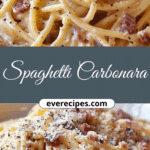
Spaghetti alla Carbonara (Authentic)
- Total Time: 25 minutes
- Yield: 4 servings
- Diet: Halal
Description
Authentic Spaghetti alla Carbonara is a Roman classic made with just a few ingredients—spaghetti, guanciale, eggs, Pecorino Romano, and black pepper—transformed by technique into a silky, rich, and peppery dish with no cream or garlic needed.
Ingredients
- 400 g spaghetti
- 150 g guanciale, cut into lardons (or pancetta)
- 4 large egg yolks + 1 whole large egg
- 100 g Pecorino Romano, very finely grated (or 70 g Pecorino + 30 g Parmigiano Reggiano)
- Freshly ground black pepper
- Fine salt, for pasta water
Instructions
- Place guanciale in a cold skillet over medium heat. Cook, stirring occasionally, until fat renders and guanciale is golden and crisp. Turn off heat and leave fat in pan.
- In a bowl, whisk the egg yolks and whole egg with most of the cheese and a generous amount of black pepper until thick and creamy.
- Cook spaghetti in well-salted boiling water until just al dente. Reserve about 1 cup of pasta water, then drain.
- Add hot drained pasta to the skillet with guanciale and fat (off the heat). Toss to coat and add a splash of pasta water to loosen and emulsify the fat.
- Pour the egg and cheese mixture over the pasta while tossing constantly off heat. Gradually add hot pasta water as needed until the sauce is glossy and clings to the pasta without scrambling the eggs.
- Plate immediately and top with the remaining cheese and more black pepper. Serve hot.
Notes
Use pancetta or thick-cut bacon if guanciale is unavailable, but adjust salt accordingly.
Blend Pecorino with Parmigiano for a milder flavor.
Serve immediately—carbonara doesn’t hold well.
Leftovers can be enjoyed at room temperature or turned into a next-day frittata.
Control heat to prevent scrambling the eggs during mixing.
- Prep Time: 10 minutes
- Cook Time: 15 minutes
- Category: Main Dish
- Method: Stovetop
- Cuisine: Italian
Nutrition
- Serving Size: 1 serving
- Calories: 520
- Sugar: 1g
- Sodium: 580mg
- Fat: 24g
- Saturated Fat: 9g
- Unsaturated Fat: 13g
- Trans Fat: 0g
- Carbohydrates: 50g
- Fiber: 2g
- Protein: 23g
- Cholesterol: 195mg

